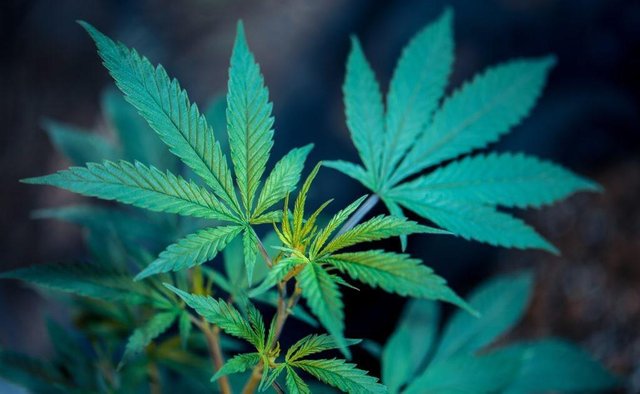
Ah, what a controversial herb this is! Found in every street in all corners of British society, this particular weed is widely utilized for its ability to treat nausea, calm the mind, relieve pain and increase appetite. Sadly, it is more often than not used as a recreational drug, and is associated with a black market that mass produces the plant without any regulation or oversight. As the result of prohibition, it is unable to be used for medicinal purposes unless in the extracted, chemical forms, though the non-psychoactive varieties of hemp are grown for their nutritious seeds which can be used to make oil, and also as a textile.
Nowadays, this herb is associated with Black gang culture and all of the thuggery and degeneracy that goes along with the criminal and recreational elements, but this is only a recent phenomenon. In the past, cannabis sativa was grown all over Europe for its value both as a medicine and as a textile, though it is probably not native. Its native range is probably Central Asia, and it was likely to have been introduced to Europe by the Aryans migrating from the Russian Steppe, where it grows wild in the form of cannabis ruderalis. Cannabis sativa is the cultivated form of the herb and has been widely utilized for its mind altering affects, particularly those relating to euphoria and creativity. The main chemical constituents of cannabis are THC and CBD, though the ratio of these may vary between different strains of the herb.
The connection between Cannabis and ecstasy (the state of being, not the drug MDMA) is well attested today and in ancient times. It is known by names such as ‘reliever of grief’ and ‘banisher of sorrow’, and was used to treat anxiety because of its ability to engage the more logical side of the brain and calm over-active emotions. It has been used by Indian ascetics known as sadhus to assist in meditation and to achieve liberation from the five senses. Naturally, the use of the herb for this purpose requires tremendous will and discipline, and so most folk prefer to utilize its ritual or medicinal uses.
One example is given by the Greek historian, Herodotus, who wrote that the Scythians of the Russian Steppe used Cannabis as part of a funeral ritual, where the seeds (he probably meant the flowers, which are known as ‘buds’ and do not look like flowers) were thrown on heated stones underneath a felt blanket and the resulting vapour was inhaled by the participants. The effects of the vapour were probably intended to soothe grief and accept the passing of a relative, by easing the attachment to that person temporarily. Cannabis was also used by the Ancient Celts, as excavations of an Iron Age chieftain’s grave in Hochdorf, Germany, have revealed traces of hashish (a refined form of Cannabis) on his cloak, suggesting that he was involved in using the sacrament. Hemp seeds have also been found among the clothing of women from Viking Age burials in Denmark, although it is not clear whether they were used for psychoactive purposes or simply for food. Even excavations of William Shakespeare’s home at Stratford-Upon-Avon have revealed traces of Cannabis in clay pipes found in what would have been the garden, supporting the idea that Cannabis has, and still is frequently used, by writers and poets for inspiration and creativity.
Cannabis is not known to be lethal in any capacity (though it may be adulterated with toxins as a result of illicit production) and while its medicinal effects are lauded by those with enough clarity to see them, it also has its downsides as a drug. Some people with a predisposition to addiction may find themselves indulging in the plant for psychological pain relief, something which is possible with Cannabis but must be accompanied by the appropriate therapy, otherwise it becomes a habit and a vice. Excessive use can cause a loss of motivation and apathy, and may even result in a worse mood when the effects of the drug have worn off.
An excessive dosage can also cause tachycardia (rapid heart rate), low blood pressure, hallucinations, anxiety and paranoia (although this last side-effect is probably due to the fact that it is illegal, as the stimulating nature of Cannabis would worsen the worry about this fact). However, within a medicinal context, such issues are rarely a cause for concern, and it is a dreadful shame that many who need pain relief are unable to access it and are forced to rely on the pharmaceutical extracts or on street dealers who have no interest in their well-being. In the UK, Cannabis is a Class B controlled substance, and being found in possession of it can result in up to 5 years in prison or an unlimited fine and it is illegal in most parts of the world. Cannabis is sacred to Freya and can be used for any magic involving love, as it is known to be an aphrodisiac.
Hi! I am a robot. I just upvoted you! I found similar content that readers might be interested in:
https://creedofcaledon.wordpress.com/2017/09/22/european-entheogens-folk-medicine-and-magical-aids/
Downvoting a post can decrease pending rewards and make it less visible. Common reasons:
Submit
Congratulations @konen22! You have completed the following achievement on the Steem blockchain and have been rewarded with new badge(s) :
You can view your badges on your Steem Board and compare to others on the Steem Ranking
If you no longer want to receive notifications, reply to this comment with the word
STOPDownvoting a post can decrease pending rewards and make it less visible. Common reasons:
Submit